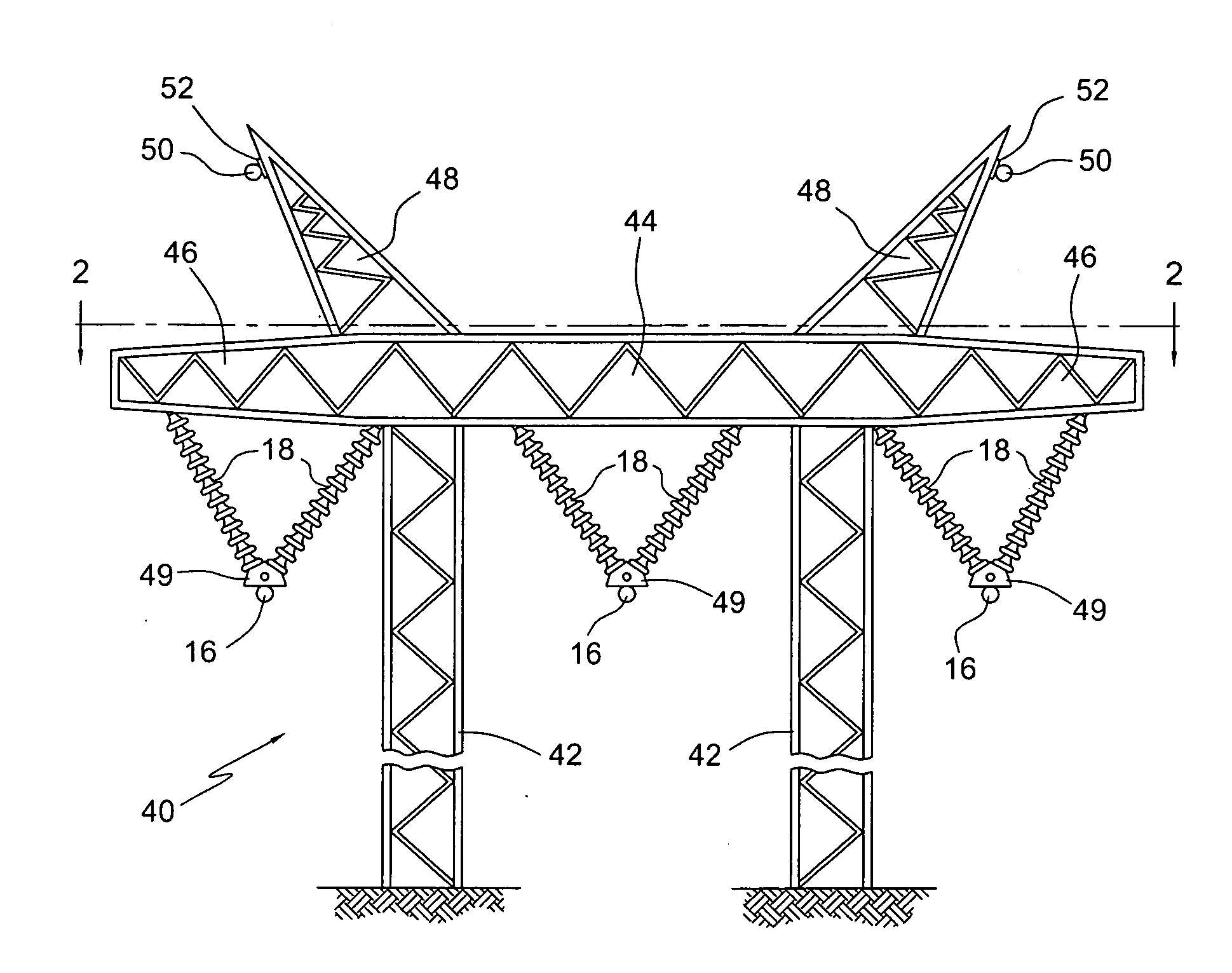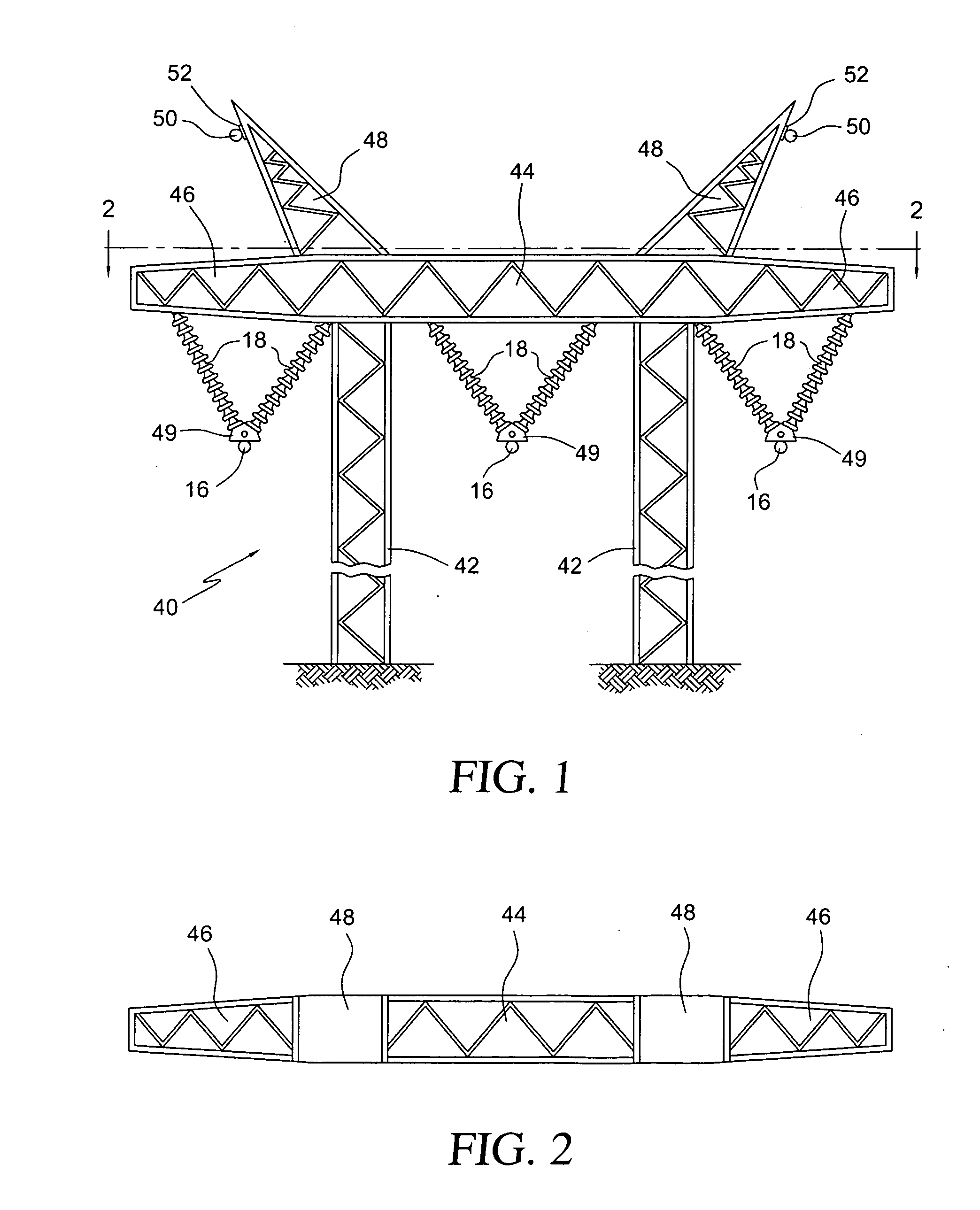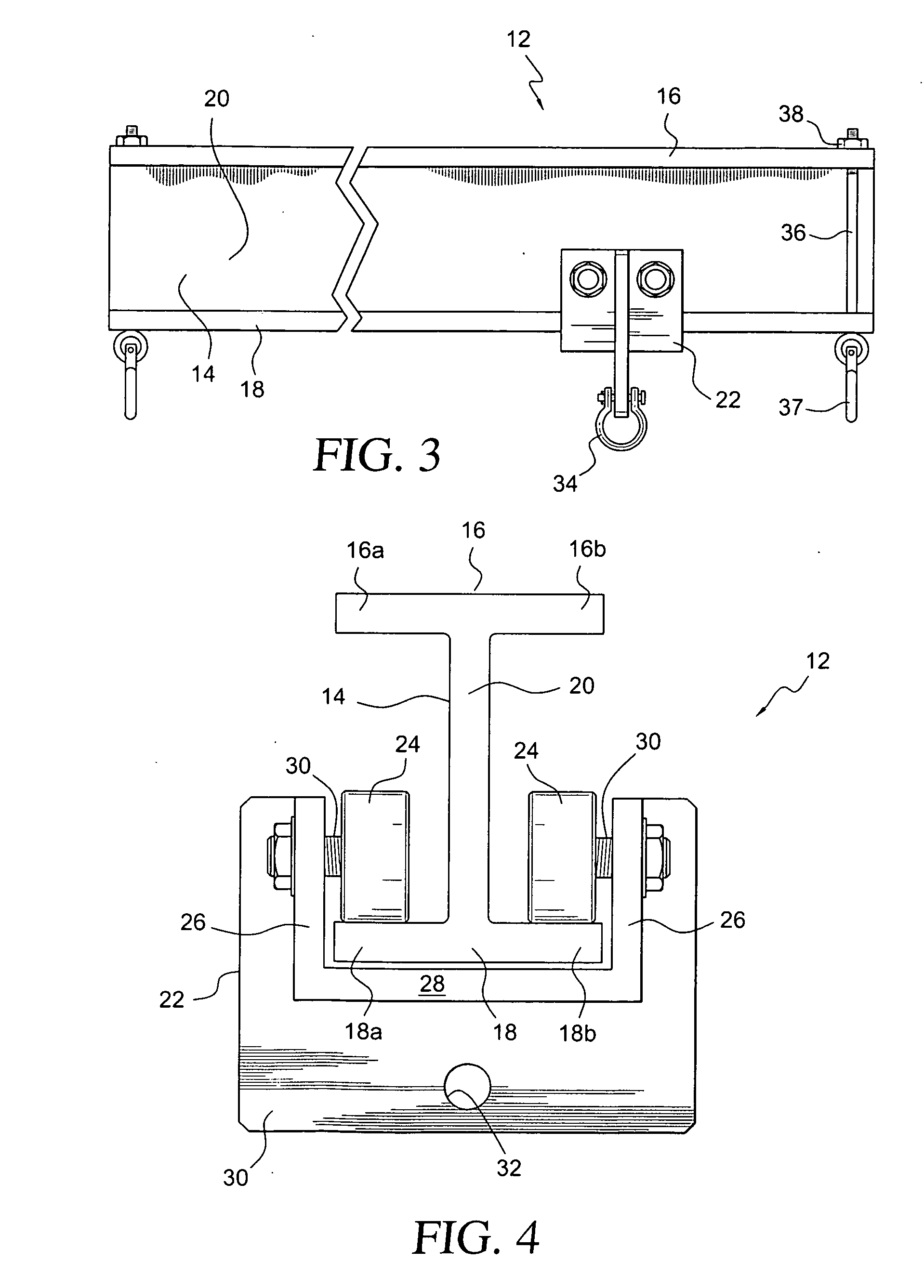Method of replacing insulators on a tower and insulator support and transport assembly therefor
- Summary
- Abstract
- Description
- Claims
- Application Information
AI Technical Summary
Benefits of technology
Problems solved by technology
Method used
Image
Examples
Embodiment Construction
[0025]Referring to FIGS. 1 and 2 there is shown a conventional steel lattice H-structure tower 40 for supporting multiple (frequently three) high voltage conductors 16. The lattice tower 40 comprises two legs 42 extending to the ground which support a central bridge 44 having left and right side extending tower arms 46. In addition, a pair of goat heads 48 extend upwardly and outwardly at an acute angle from the bridge 44 for supporting shield wires 50 via shield wire hardware 52. The lattice structure is typically constructed of angle stock. Central bridge structure 44 comprises an elongate rectangular box formed of angled stock girders, which gives the bridge a width as well as a depth. Left and right side extending tower arms 46 also comprise elongate boxes formed of angled stock girders except, as can be seen in FIGS. 1 and 2 respectively, the girders forming the tower arms 46 incline toward each other in both the vertical and horizontal planes. Conductors 16 are supported under...
PUM
| Property | Measurement | Unit |
|---|---|---|
| Length | aaaaa | aaaaa |
| Diameter | aaaaa | aaaaa |
Abstract
Description
Claims
Application Information
 Login to View More
Login to View More - R&D
- Intellectual Property
- Life Sciences
- Materials
- Tech Scout
- Unparalleled Data Quality
- Higher Quality Content
- 60% Fewer Hallucinations
Browse by: Latest US Patents, China's latest patents, Technical Efficacy Thesaurus, Application Domain, Technology Topic, Popular Technical Reports.
© 2025 PatSnap. All rights reserved.Legal|Privacy policy|Modern Slavery Act Transparency Statement|Sitemap|About US| Contact US: help@patsnap.com



